Targeting specific audiences through SEO in niche markets is crucial for reaching the right people. The diverse sizes and demands within these markets allow you to tailor your SEO strategy for optimal impact.
Whether you cater to a specialized industry or a unique customer group, understanding the nuances of niche SEO is essential. This blog dives into the specifics of niche marketing and guides you in crafting a customized SEO plan.
Get informed and learn how to harness the unique strengths of your niche to boost your online presence, attract the ideal audience, and scale your business.
What are Niche Markets?
A niche market is a specialized segment within a larger industry. It focuses on a specific product or service and caters to a small group with unique interests.
This focus leads to loyal customers who find what they seek and develop strong brand love.
What is SEO in Niche Markets?
Say you run a specialized store that only sells one type of product, like ebikes. This is a niche.
SEO for niche markets helps you target potential customers like ebike enthusiasts. It makes your website the go-to destination for their needs by using relevant keywords, like:
- Best ebikes under $1,500
- Ebike maintenance tips
- Best ebikes in 2024
And create valuable cycling content they’ll love around these long-tail keywords.

(Screenshot by Jugraj)
With less competition, you’ll have a better chance of ranking higher and attracting potential customers. The result? Increased traffic and a thriving business.
That’s the power of niche SEO.
How to Do SEO for Niche Markets?
Ready to transform your niche-market expertise into SEO gold? Look no further! Dive into our easy-to-follow guide below.
1. Explore Total Search Volume
Begin by analyzing the overall search volume for your industry. Why is this important?
Because understanding the total search volume gives you valuable insights into the demand for your niche market.
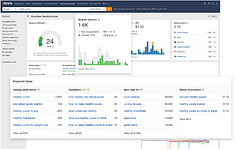
This knowledge allows you to gauge your potential audience and fine-tune your strategy accordingly. Utilize keyword research tools like Semrush and Ahrefs to uncover the search volume for related terms within your industry. Include a negative keyword list to prevent your pages from displaying to the wrong people.
Pro Tip: Go the extra mile by analyzing trends and topics and ensuring your strategies align with the market’s current needs.
2. Analyze Search Results
When boosting your online presence, understanding the competitive landscape is key. You can uncover valuable insights to refine and enhance your approach by delving into search results.
Here are five simple steps to help you get started:
Step 1: Conduct regular searches in your niche
Begin by conducting regular searches within your niche. Stay up-to-date with the latest trends and see what resonates with your audience. Taking this proactive approach keeps you informed and allows you to spot opportunities and fill gaps.
Step 2: Evaluate top-ranked pages
Make a short list of the top-performing pages in your niche. Note what makes them stand out — content, structure, or user interactions. Understanding your competitors’ strengths can guide you in optimizing your pages for better results.
Step 3: Uncover content insights
Dive deep into the content of the top-ranked pages. Look for patterns, topics, and formats that consistently perform well.
Learning from top performers will help you refine your content strategy. That way, you can focus on providing valuable information that resonates with your audience.
Step 4: Pay attention to structural considerations
Assess the structure of these successful pages. Take note of how information is organized, using headings, and the overall readability. If the top pages land a readability score of grade eight and yours read at grade 12, it’s time to switch it up.
A well-structured and easy-to-read page attracts users but also keeps them engaged. Apply these insights to enhance the organization of your content.
Step 5: Learn from user interaction insights
How are users interacting on top-ranked pages? Are they leaving comments? Do they engage in social shares?

Understanding how users interact with highly ranked content can provide valuable clues on what your target audience craves from content.
3. Check Your Competitiveness
Understanding where your website stands compared to your competitors is crucial for enhancing your online presence. You can identify gaps and make informed decisions to boost your website’s performance by assessing your competitive position.
Thankfully, with the help of SEO tools, it’s easier than ever to evaluate your website’s performance metrics. Tools like Google Analytics, Semrush, or Moz can provide valuable data about your site and its competitors.
Using Google Analytics, you can check your competitiveness using the following steps:
Step 1: Write a list of competitors
Step 2: Launch Google Analytics
Step 3: Incorporate the network domain
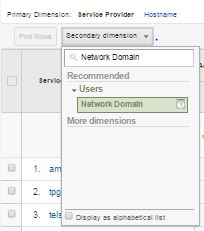
Step 4: Isolate the competitors
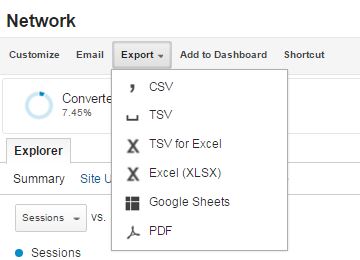
Step 5: Build segments for each
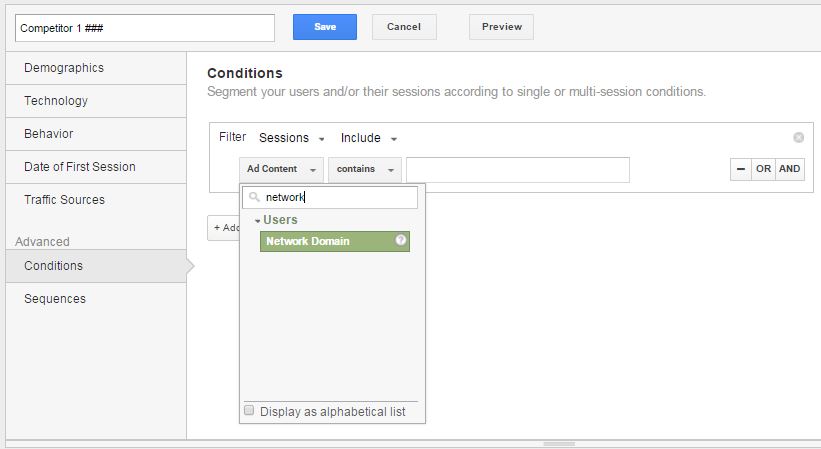
Step 6: Analyze engagement and behavior
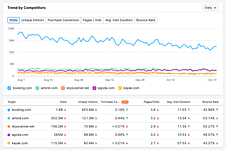
For example, with Semrush, you can quickly compare your website with those of your top competitors. Look into metrics such as:
- Keyword rankings
- Backlink profiles
- Unique visitors
- Organic traffic
This detailed comparison will unveil areas where you excel and highlight aspects that need improvement.
One area to keep a close eye on is page speed. Users value speed, and it can make or break whether they return to your website.
Check your website’s page load speed and compare it with your competitors. Users may bounce before engaging with your content if your site is slow.
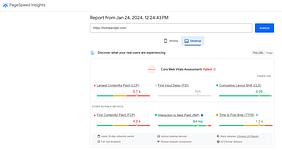
(Screenshot by Jugraj)
If your site receives a failing score in Google’s PageSpeed Insights tool, here are a few ways to improve your load times:
- Consider a content delivery network (CDN)
- Leverage browser caching
- Optimize images
The user experience is a critical factor for both search engines and visitors. You’ll likely notice that your biggest competitors have simple navigation, mobile responsiveness, and an aesthetic overall design.
And so should you. Aim for a seamless experience that keeps visitors engaged and encourages them to explore your content.
Through your competitive analysis, pinpoint specific areas for improvement. Whether it’s optimizing meta tags, refining content, or fixing broken links, addressing these aspects can positively impact your SEO strategy.
4. Conduct Keyword Research
Keyword research forms the foundation of successful SEO strategies, especially in niche markets.
It’s like learning the language of your audience. You need to know exactly what words they’re using when they jump online to perform a search.
Thankfully, you don’t have to look into a magic eight-ball and hope that keywords come to you out of thin air. Keyword research tools do the hard work for you.

Using Semrush for keyword research is a powerful way to optimize your SEO strategy and drive targeted traffic to your website. Follow these steps to effectively use Semrush for keyword research:
Step 1: Create a Semrush Account
First, visit the Semrush website and sign up for an account. Semrush offers various plans, including a free trial period.
Step 2: Access the Keyword Overview Tool
Once logged in, navigate to the dashboard. From the left-hand menu, select “Keyword Research” and then “Keyword Overview.”
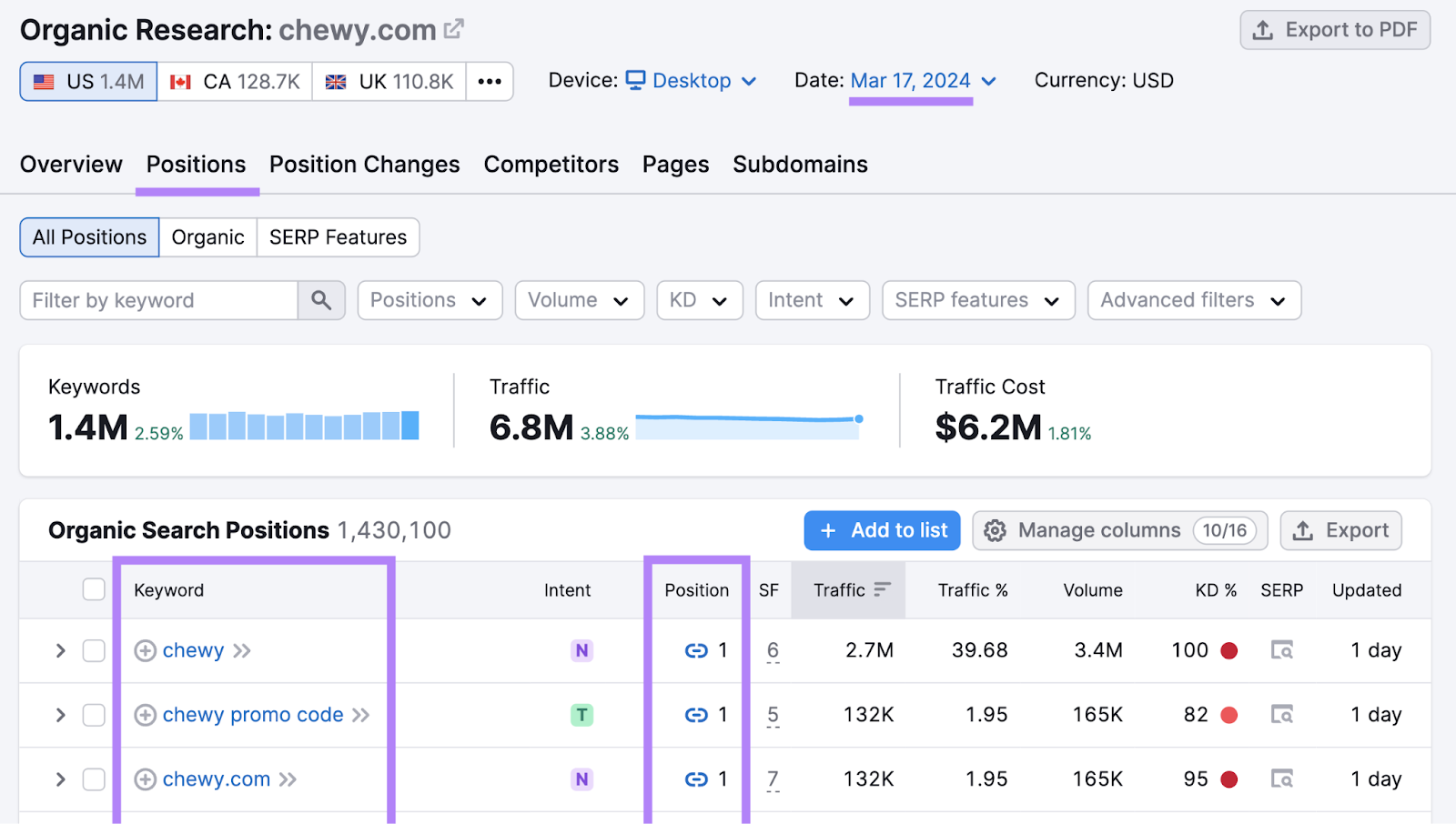
Step 3: Enter Your Seed Keyword
In the “Keyword Overview” section, enter your primary keyword or seed keyword in the search bar and click “Search.” This will generate a comprehensive report on the keyword.
Step 4: Analyze the Keyword Overview Report
The Keyword Overview report provides valuable data, including:
- Search Volume: The average number of monthly searches.
- Keyword Difficulty: An estimate of how hard it would be to rank for this keyword.
- CPC (Cost Per Click): The average cost per click for paid search ads.
- SERP Features: Special features appearing in search results for this keyword.
Step 5: Explore Keyword Variations
Scroll down to see keyword variations, which incl 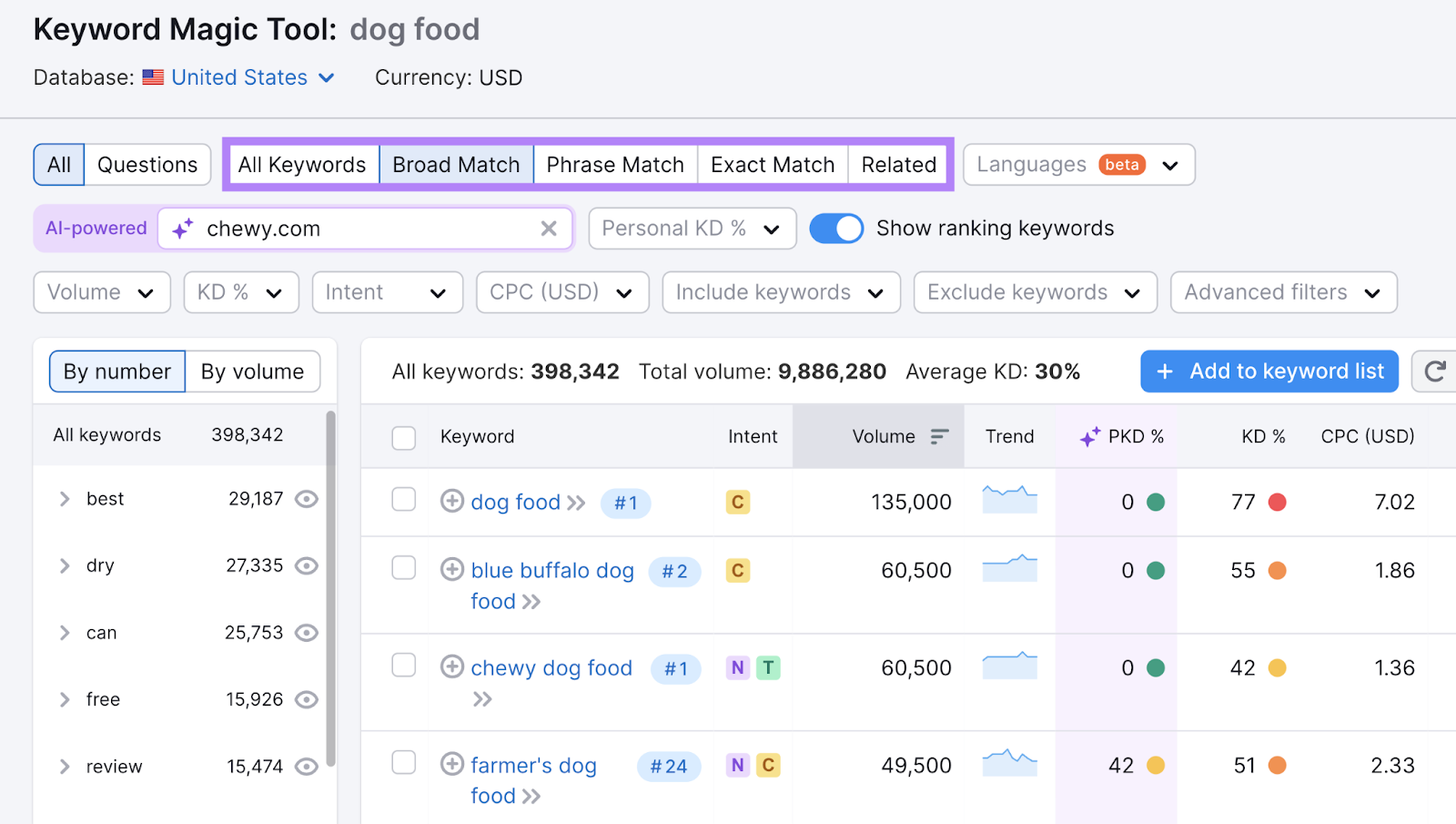 ude related keywords, questions, and long-tail keywords. These variations can help you find less competitive keywords that are still relevant to your niche.
ude related keywords, questions, and long-tail keywords. These variations can help you find less competitive keywords that are still relevant to your niche.
Step 6: Use the Keyword Magic Tool
For more in-depth keyword research, click on “Keyword Magic Tool” under the “Keyword Research” section. Enter your seed keyword again and click “Search.”
Step 7: Filter and Sort Keywords
In the Keyword Magic Tool, you can filter keywords by search volume, keyword difficulty, and other metrics. Use these filters to narrow down your list to the most relevant and attainable keywords.
Step 8: Analyze SERP Features and Competitors
Click on individual keywords to see a detailed analysis of SERP features and top-ranking pages. This helps you understand the competition and what it takes to rank for these keywords.
Step 9: Export Your Keywords
After finalizing your keyword list, you can export it by clicking the “Export” button. This allows you to download the data in CSV or Excel format for further analysis and planning.
Step 10: Implement Keywords in Your Content
Finally, integrate the selected keywords into your website content, meta tags, headers, and other relevant areas. Monitor your rankings and adjust your strategy as needed based on performance data.
Here’s a little tip: zero in on those niche-specific, long-tail keywords. They’re the goldmines for boosting your rankings on search engines.
Why?
- They reflect the real needs and interests of your audience.
- They draw in the exact crowd you’re looking for.
- They’re less competitive.
But remember, it’s not just about getting anyone and everyone to your site. It’s about attracting the right crowd — people who are genuinely into what you’re dishing out.
5. Add Keywords to your Site
Strategically placing keywords in your content is crucial for enhancing your search engine visibility and boosting your chances of connecting with a targeted audience.
To achieve this, seamlessly integrate your selected keywords into various elements of your website, including headings, meta tags, and image alt text.
For a more user-friendly experience, it’s important to avoid keyword stuffing. Instead, focus on creating high-quality, relevant content where you naturally incorporate your chosen keywords.
If you need more guidance on what keywords to add and where, consider investing in content optimization tools like SurferSEO and Frase.
6. Don’t Skimp on Technical SEO
Let’s face it. Technical SEO is, well, technical. But it’s a necessary aspect of SEO to guarantee your website appears in search engines to begin with.
We won’t go too deep into it here, but if you can dial in these five elements of technical SEO, you’re paving your way to success in the SERPs.
- Ensure your website is mobile-friendly, providing a smooth experience across all devices.
- Optimize your site’s loading speed to enhance user experience and search engine rankings.
- Use SSL encryption to secure yoursite and buildtrust with both users and search engines.
- Create a clear, logical site structure with a well-organized sitemap for easy navigation.
- Implement descriptive, keyword-rich URLs and meta tags for better indexing and relevance.
7. Create a Link Profile
According to Jeremy Moser, founder and CEO of uSERP, links are, have been, and likely always will be the #1 ranking factor for SEO.
Why? Building a strong and diverse link profile composed of high-quality backlinks from reputable websites within your niche boosts your website’s authority and credibility, leading to improved search engine rankings.
Develop a targeted link-building strategy focused on acquiring backlinks via:
- Activelypromoting your content on social media
- Collaborating with other websites in your niche
- Guest posting on relevant blogs
- Hiring anSEO agency
Any of the methods above will help you attract valuable backlinks that enhance your website’s visibility and authority in search results.
8. Share Quality Content
High-quality content isn’t just a search engine optimization (SEO) booster — it’s a magnet for your target audience.
Remember that one blog post you loved and shared with your entire LinkedIn network. It went viral and undoubtedly brought in new customers for that brand. That’s the power of content that resonates with your readers.
To replicate that success, consistently produce valuable, relevant, and engaging pieces tailored to your niche.
Pro Tip: Sprinkle in calls to action and optimize your website for social sharing to encourage engagement and build a loyal following.
Benefits of SEO for Niche Markets
Focusing on SEO in a niche market unlocks several key benefits. Let’s take a look at them.
1. Laser-focused keywords
Targeting niche-specific keywords attracts a high-quality audience with clear buying intent. These keywords may have a lower search volume but lead to qualified leads and better conversions.
Unlike general keywords, niche terms reveal user intent, guiding you to tailor content and boost conversions.
2. Content that resonates
A niche focus empowers you to create deep, targeted content that speaks directly to your audience’s needs and interests. This establishes you as an authority, builds trust, and attracts customers away from competitors.
Your content cuts through the noise, increasing visibility and clicks.

(Screenshot by Jugraj)
3. Building a loyal following
Effective SEO builds a strong online presence, allowing you to connect with niche audiences on a deeper level. This fosters a sense of community and loyalty, leading to repeat customers and positive word-of-mouth recommendations.
You can build a loyal customer base who become your brand ambassadors by providing valuable content, addressing specific needs, and engaging with your audience.
Important Metrics to Track
For SEO in niche markets, tracking specific metrics is essential to evaluate the effectiveness of your strategies and adjust your approach accordingly.
Conversion Rate
Conversion rate is a crucial metric for any niche market as it measures the percentage of visitors who complete a desired action (like making a purchase or signing up for a newsletter) divided by the total number of visitors.
This metric helps gauge the effectiveness of your SEO strategies in driving meaningful interactions.
Keyword Rankings
Tracking keyword rankings helps you understand how well your site is performing in search engine results for specific terms relevant to your niche. Improvement in rankings can lead to increased traffic and better visibility among your target audience.
Backlinks
Backlinks from credible sites not only boost your site’s authority but also drive referral traffic. For niche markets, quality backlinks from industry-specific sources are particularly valuable as they signal relevance and credibility to search engines.
ROI and Revenue
Measuring Return on Investment (ROI) and revenue generated from SEO activities is essential to understand the financial impacts of your marketing efforts. This metric helps evaluate which strategies yield the best financial returns and justify further investment in certain areas.
Bounce Rate
The bounce rate indicates the percentage of visitors who leave your site after viewing only one page. A high bounce rate might suggest that your site’s content, user experience, or SEO targeting is not effectively engaging the niche market audience.
Closing Thoughts
Are you ready to dominate SEO in niche markets?
It all comes down to these four things:
- Prioritizing keyword research on long-tail keywords and phrases
- Writing top-quality content across the buyer’s journey
- Creating a technically flawless web presence
- Building high-backlinks to your website
But if you’re looking for an SEO digital marketing agency to help you develop an SEO strategy and forecast future results, reach out to us today.
Here’s to your SEO success!
Frequently Asked Questions
How do I find SEO keywords in my niche?
To find SEO keywords in your niche, start by using keyword research tools like Google Keyword Planner, Ahrefs, or SEMrush to identify relevant keywords based on search volume and competition. Analyze your competitors to see what keywords they are targeting. Engage with your audience on social media and forums to understand the terms and phrases they use.
How do niche markets attract customers?
Niche markets attract customers by focusing on specific needs and preferences that are not adequately addressed by mainstream providers. They leverage targeted marketing strategies, such as SEO, social media engagement, and content marketing that resonates deeply with their particular audience.
By positioning themselves as experts or enthusiasts in their specific area, niche businesses build strong relationships with their customer base, often leading to high levels of customer loyalty and word-of-mouth referrals.
Can long-tail keywords help with SEO in niche markets?
Yes, long-tail keywords can significantly help with SEO in niche markets. These keywords are more specific and less competitive, making it easier to rank higher in search engine results. By targeting long-tail keywords, businesses can attract more qualified traffic, as these keywords often reflect the precise needs and interests of niche audiences.
About the author:

Bio: Kelly Moser is the co-founder and editor at Home & Jet, a digital magazine for the modern era. She’s also the content manager at Login Lockdown, covering the latest trends in tech, business and security. Kelly is an expert in freelance writing and content marketing for SaaS, Fintech, and ecommerce startups.




